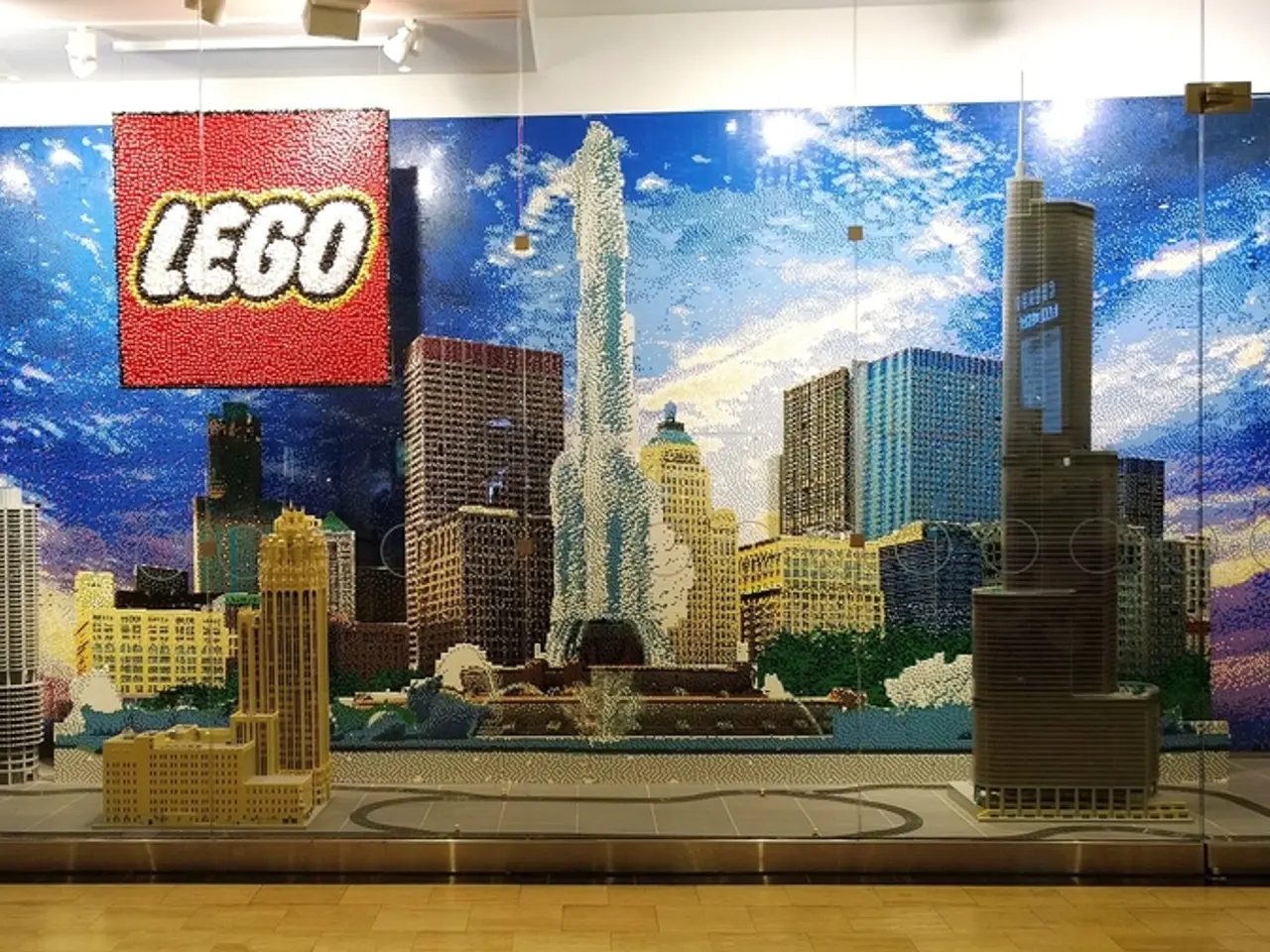LEGO Education's New Version: WeDo 2.0
In the realm of educational toys, LEGO WeDo 2.0 stands out as a powerful learning tool that introduces children to robotics, engineering, programming, and STEM (Science, Technology, Engineering, and Mathematics) concepts in an engaging and interactive way.
Designed by LEGO Education, WeDo 2.0 offers a user-friendly interface with drag-and-drop code blocks, making it accessible for children to bring their physical models to life through simple coding. The basic package includes 280 building elements, a Bluetooth Low Energy-based hub, a motor, motion, and tilt sensors.
For those embarking on their WeDo 2.0 journey, the first four projects, known as the "Getting Started" projects, provide an introduction to the software, motor, and sensors. These projects serve as a foundation for more complex builds, such as a Football Player Robot that kicks with precision, a moving satellite powered by a motor, and even innovative projects about plant science.
The software comes with 8 guided projects that offer full building instructions and code to solve a specific problem. Each project is standalone and does not require that students complete the one before. For example, one of the first projects involves building Milo the Science Rover. The helicopter shown in the article is from the Drop and Rescue project, and its winch moves up and down when coded correctly.
However, WeDo 2.0 is not just about following instructions. Advanced projects encourage critical thinking and problem-solving skills in several key ways. Design and Construction Challenges require students to plan and build functional robots or models, considering mechanics, structure stability, and components interaction. Coding and Programming involve sequencing commands, debugging, and logical reasoning to achieve desired behaviors.
Iterative Testing and Refinement foster a growth mindset and solution-oriented thinking, as learners must test their creations, identify issues, and revise their designs or code. Collaboration is also a vital part of the LEGO robotics experience, with many activities done in teams, promoting idea sharing, negotiation, and cooperative problem-solving.
Moreover, many projects present open-ended, problem-based tasks that have multiple solutions, encouraging creativity and exploration. Each project is explained with a fun animated video and encourages children to think about real-life problems. Additionally, each project has an added extension task to stimulate creativity.
Children are encouraged to photograph their work and record findings for teachers to track their progress. They are also encouraged to research actual space rover missions and present their prototype ideas. Sample code is given at the end of the instructions, but it can be expanded upon for added features.
In conclusion, LEGO WeDo 2.0 offers a unique blend of construction, coding, and teamwork, developing STEM skills alongside critical thinking and problem-solving in engaging, hands-on ways. As of July 18, 2025, this article was last updated by Emma Vanstone. The set was sent for the purpose of this post.
[1] LEGO Education. (2020). LEGO WeDo 2.0. Retrieved from https://education.lego.com/en-us/products/wedo-2-0/45605 [2] LEGO Education. (2020). LEGO WeDo 2.0 Projects. Retrieved from https://education.lego.com/en-us/products/wedo-2-0/45605 [3] LEGO Education. (2020). WeDo 2.0 Software. Retrieved from https://education.lego.com/en-us/products/wedo-2-0/45605 [4] LEGO Education. (2020). Design Library. Retrieved from https://education.lego.com/en-us/products/wedo-2-0/45605 [5] LEGO Education. (2020). WeDo 2.0 in the Classroom. Retrieved from https://education.lego.com/en-us/products/wedo-2-0/45605
- LEGO WeDo 2.0, designed by LEGO Education, is a valuable educational tool that fosters children's understanding of robotics, engineering, programming, and STEM concepts within a captivating and interactive setting.
- Encompassing a user-friendly interface with drag-and-drop code blocks, WeDo 2.0 enables children to animate their physical models through straightforward coding, using elements like motors, sensors, and a Bluetooth Low Energy-based hub.
- For newcomers to WeDo 2.0, a series of introductory projects, known as "Getting Started" projects, are available, offering a foundation for more complex builds and activities, such as designing a Football Player Robot or a satellite propelled by a motor.
- The software accompanying WeDo 2.0 offers eight guided projects with comprehensive building instructions and code to tackle specific challenges. Each project stands alone, allowing learners to progress at their own pace.
- Beyond mere instruction following, WeDo 2.0 encourages learners to develop critical thinking and problem-solving skills through Design and Construction Challenges, Coding and Programming tasks, Iterative Testing and Refinement, and real-life project scenarios.
- Teamwork is another crucial aspect of the LEGO robotics experience, as many activities promote idea sharing, negotiation, and cooperative problem-solving.
- Furthermore, projects in WeDo 2.0 often present open-ended, problem-based tasks with multiple solutions, stimulating creativity, exploration, and self-direction both in online education and real-life settings.




